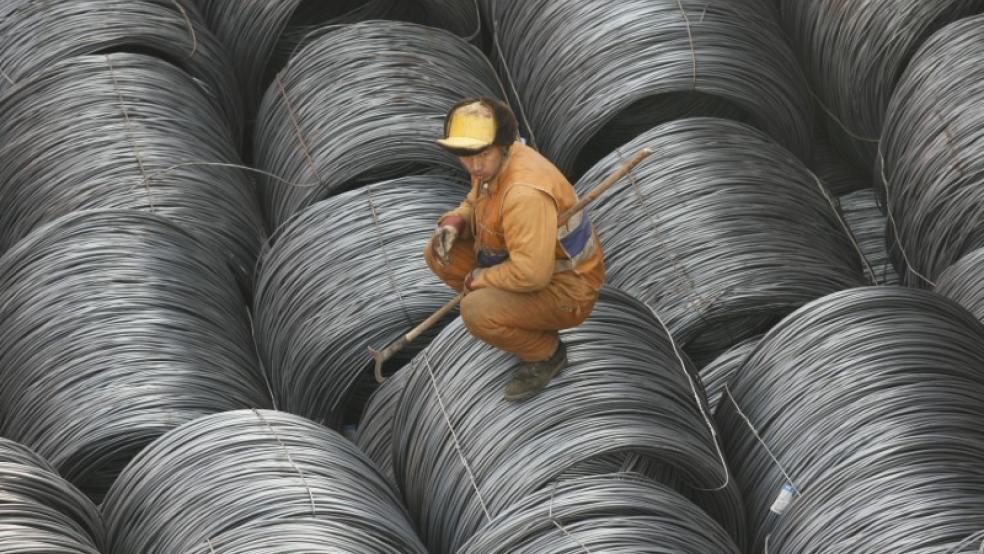BEIJING (Reuters) - China's imports grew at the fastest pace in more than two years in November, fueled by its strong thirst for commodities from coal to iron ore, while exports also rose unexpectedly, reflecting a pick-up in both domestic and global demand.
The upbeat data adds to signs of a modest industrial recovery in the world's largest economies, even as China and other Asian exporters brace for a potential trade war once protectionist U.S. President-elect Donald Trump takes office."The improvement reflects a strengthening in global demand, with recent business surveys suggesting that developed economies are on track to end the year on a strong note," Julian Evans-Pritchard, China economist at Singapore-based Capital Economics, said in a note."But while global demand has recovered somewhat recently, lower trend growth in many developed and emerging economies means that further upside is probably limited."China's November imports expanded 6.7 percent on-year, confounding expectations for a drop of 1.3 percent and the strongest gain since September 2014, data showed on Thursday.Exports rose 0.1 percent from a year earlier, defying predictions for a 5 percent slide. Demand from all of China's major trading partners improved significantly, especially Europe and the United States, though shipments to emerging economies remained weak.That left the country with a trade surplus of $44.61 billion for the month, the General Administration of Customs said, versus forecasts of $46.30 billion and October's $49.06 billion.Analysts polled by Reuters had expected a more modest drop in November exports after a 7.3 percent contraction in October, while imports had been seen falling at roughly the same pace.MAN OF STEELChina's imports of major commodities including iron ore, crude oil, coal, soybeans and copper all surged in November, despite a sharp weakening in its yuan currency.While some analysts have worried that sharp commodity price rises could be masking still sluggish demand, the data showed imports rose in both value and volume terms.A government infrastructure building spree and housing rally have fueled a construction boom in China this year, spurring demand for building materials from steel bars to cement.China imported 91.98 million tonnes of iron ore in November, the third highest monthly tally on record, while imports of copper, used in plumbing and wiring, surged 31 percent.China also imported its largest volume of coal in 18 months, as utilities rebuilt stocks to cope with higher winter demand. Its strong appetite has helped fuel a reflationary pulse in global commodities worldwide.Some market watchers, however, suspected the spike in metal imports may have been due to shipments being delayed from October during the country's long National Day holiday. Top suppliers Australia and Brazil may have also ramped up iron ore exports to China to meet annual targets as the year-end nears."The rise in copper imports reflected in part a rise in Shanghai Futures Exchange inventories and stronger demand from the Chinese power and construction sectors," said Vivek Dhar, a commodities analyst with Commonwealth Bank in Melbourne."The debate dividing the market is whether this growth can be sustained into next year, or will things flatten out. This isn't necessarily clear just yet."ROCKY ROAD AHEAD?The better-than-expected trade figures cement expectations that China's government will once again meet its full-year growth target, which this year was set at 6.5 to 7 percent.But the world's largest trading nation could be heavily exposed to protectionist measures next year if Trump follows through on campaign pledges to brand it a currency manipulator and impose heavy tariffs on imports of Chinese goods. South Korea and Taiwan are worried, too. Both also reported stronger-than-expected exports in November. "We would not think of the positive (China) numbers as an inflection point. Of all the high frequency economic data over the year, trade headwinds are likely to be the most severe, and the most uncontrollable, due to trade policies of other countries," said Chester Liaw, an economist at Forecast Pte Ltd in Singapore.China is squarely in Trump's sights. Its trade surplus with the United States has widened steadily over the past years, expanding 6.5 percent to $367.11 billion in 2015, U.S. Census Bureau data showed. Even if Trump does not try to impose punitive measures, growing protectionist sentiment could have a chilling effect on trade and investment worldwide.The chief of China's sovereign wealth fund said on Thursday he expected Trump to be very careful in considering whether to increase tariffs in line with his election promises because it would not be in U.S. interests. The United States is China's largest trading partner.Stubbornly weak export demand has dragged on China's economic growth to the point where Beijing did not even set a trade target this year.That has forced policymakers to rely on higher government spending and record bank lending to boost activity, even at the risk of adding to a mountain of debt.China's exports in the first 11 months of the year fell 7.5 percent from the same period a year earlier, while imports dropped 6.2 percent.Analysts have warned that a property boom which has generated a significant share of economic growth this year may be peaking, threatening to snuff out a spectacular months-long rally in Chinese commodities prices. (Reporting by Yawen Chen and Beijing Monitoring Desk; Additional reporting by the Asia Commodities and Energy team, Manny Serapio in MANILA; Editing by Kim Coghill)Chinese trade data shows signs of industrial recovery

Jason Lee



